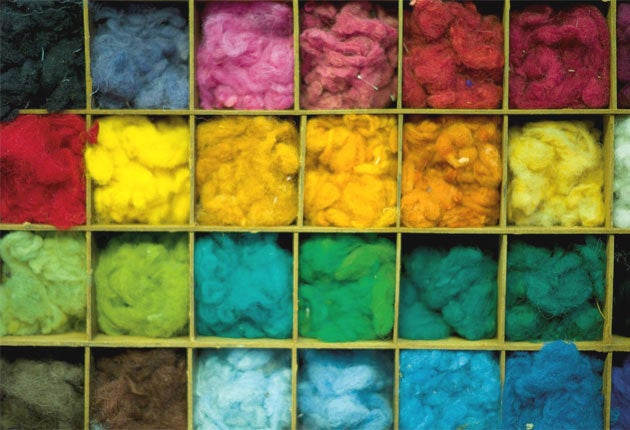Tweed recipes: Shear brilliance
Harris Tweed has been the backbone of beautiful suits for more than a century. As a new book celebrates the craftspeople behind it, Alice-Azania Jarvis charts the fabric's journey from sheep to Savile Row

Derek Campbell shears the sheep. David McLeay dyes the wool. And Donald Murray weaves it. On the weather-beaten isle of Harris, just off the west coast of Scotland, these activities have made up the economy for generations. It's here that Harris Tweed (Clo Mhor in the original Gaelic "the big cloth") is made. The most famous of all the tweeds, it has been turned into suits since 1909, shortly after the new-fangled Trade Marks Act allowed nimble-fingered residents to put a stamp on their designs and ship them off to London.
Photographer and journalist Lara Platman left her home in Gloucestershire to spend a year with Campbell, McLeay, Murray et al. Her intimate portraits, laid out in Harris Tweed: From Land to Street, follow the fabric as it is created: from the birth of the Cheviot lambs, to their shearing, the washing and sorting of the fleece and the creation of the yarns, right up until the final moment – the gentleman's suit, proudly displayed, on a mannequin in a Savile Row tailor's window.
Throughout, personal stories punctuate the process. Katie Campbell has been weaving since 1967 – it's her wool pictured on the line above, overlooking the Little Minch sea. She weaves independently, inspired by the colours in the landscape around her, and then takes her tweeds to the Harris factory for approval. No patterns are written down; she does it all from memory.
Elsewhere, an unnamed shearer shows off his rare ability to shear by hand – a skill he shows off at competitions around the country – while George Graham, Stamper of the Orb, works four days a week ironing the official Harris logo onto the cloth.
Platman's book lays bare unexpected intricacies. Who would have guessed that the dusty shades of tweed – the greens, the browns, those washed-out blues – necessitate such bold bright yarns, shown above in all their technicolour glory? In fact, Harris yarns come in every colour of the rainbow; a dedicated colour designer then blends them according to colour "recipes", ready to be turned into the autumn shades we know and love.
And what perfectionism! Before Graham's iron is allowed anywhere near it, the tweed must be inspected: no snags, oily marks or wool discolouration is permitted. You don't stay in business for a century by taking short cuts.
'Harris Tweed: From Land to Street' by Lara Platman is published by Frances Lincoln (£25). To order a copy for the special price of £21.25 (free P&P), call Independent Books Direct on 08430 600 030, or visit www.independentbooksdirect.co.uk
Subscribe to Independent Premium to bookmark this article
Want to bookmark your favourite articles and stories to read or reference later? Start your Independent Premium subscription today.

Join our commenting forum
Join thought-provoking conversations, follow other Independent readers and see their replies